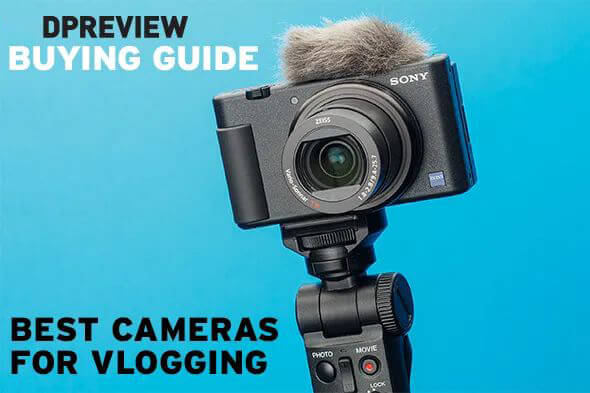
Whether you're just sharing clips with friends or starting a career in front of the online lens, video blogging (vlogging) matters. At some point, your smartphone might not deliver the look, control, or flexibility you desire. With 180-degree selfie screens, wide-angle lenses, microphone inputs, and excellent video quality, a growing number of dedicated cameras cater to people who want to film themselves and post online.
The meaning of vlogging has evolved over the years, so our selections cover various styles—we’ll explain what makes each camera suitable for vlogging and highlight key features that simplify self-filming. We also provide sample footage shot on each camera to give you a sense of their performance.
Best Camera for Mobile Vlogging: DJI Osmo Pocket 3
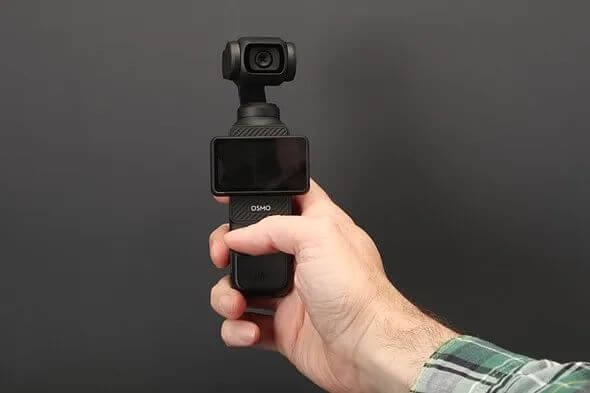
DJI’s Osmo Pocket 3 is a stabilized handheld vlogging camera designed specifically for on-the-go vlogging. It’s built around a 1-inch-type (13.2 x 8.8mm) sensor mounted on a tiny gimbal, meaning it delivers smoother, more stable footage than any traditional camera or smartphone.
The small sensor performs best in well-lit environments, though its relatively bright F2.0 lens allows for indoor use too.
It can shoot 4K 16:9 video, or 3K vertical 9:16 footage by rotating the screen to an upright position. A small joystick lets you control camera movement, and clicking the joystick button flips the camera between facing you or away from you.
Its reliance on contrast-detection autofocus means it may hunt for focus occasionally, but its face-detection mode works so well that this rarely becomes an issue when speaking to the camera.
Beyond the gimbal’s smooth stabilization and true portability, one of Osmo’s key strengths is its compatibility with a range of Bluetooth microphones, allowing you to capture high-quality audio without extra transmitters or receivers.
Video quality isn’t always top-tier, and autofocus can occasionally frustrate, but overall, the Pocket 3’s quality and convenience as a package are hard to beat.
Standalone Vlogging Kit: Canon PowerShot V1
*16-50mm F2.8-4.5 zoom | 22MP 18x12mm Dual Pixel CMOS sensor | 4K/60 with crop*
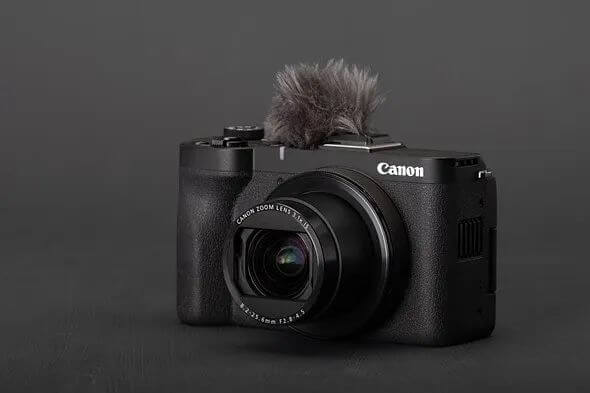
The Canon PowerShot V1 is a mid-sized vlogging compact with a relatively large sensor and a wide-angle zoom lens.
It offers a competitive set of vlogging features, built-in ND filters, and solid stabilization options. It’s comfortable to hold when facing you and lets you access key settings via the touchscreen. It includes microphone and headphone jacks, plus a fan for extended recording sessions.
Autofocus performance is strong, with reliable tracking and effective subject recognition. The camera is generally responsive, and the zoom reacts quickly to input.
The V1’s wide-angle lens lets you crop in 4K/60p mode while retaining a wide perspective. The full-sensor readout exhibits noticeable rolling shutter, so you may need to use the cropped 50/60p mode for fast-moving scenes.
The V1 is a capable option with a useful zoom range, and it’s hard to argue with as an all-in-one solution. You do sacrifice some flexibility for other types of filmmaking, but it should cover most of your vlogging needs.
We also considered Sony’s entry-level vlogging cameras with 1-inch sensors: the ZV-1, ZV-1F, and ZV-1 II. The latter, with its wide-angle zoom and built-in ND, is the best of the bunch but hard to recommend. Its quality is only slightly better than flagship smartphones, and if you’re carrying an extra gadget anyway, it’s better to spend a bit more for a more flexible or powerful camera.
For Ambitious Vloggers and Filmmakers: Sony ZV-E10 II
*26MP APS-C sensor | Full-width 4K/24p, 1.1x crop 4K/60p video | Fully articulating screen*
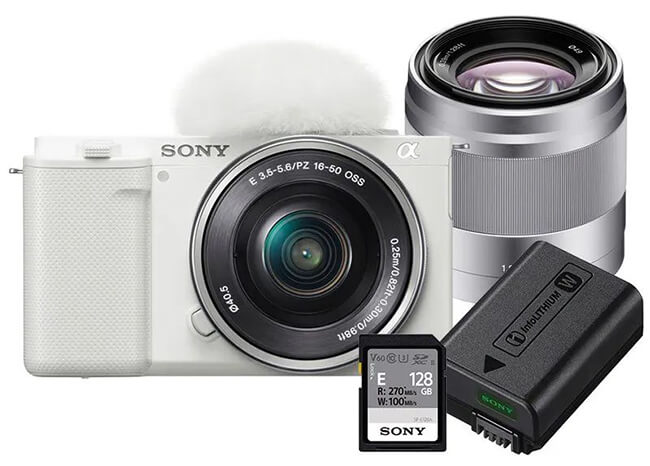
The Sony ZV-E10 II focuses on vlogging, with stable 4K/24p and 4K/60p shooting, plus features tailored for self-filming.
It has an excellent grip, easy-to-press buttons, and a touchscreen that lets you adjust key settings without rotating the camera. The zoom rocker works great with power zoom lenses.
Subject-tracking autofocus is fast, sticky, and accurate, though it lacks all modes available on other Sony cameras. Product Showcase mode prioritizes items held in front of you, and there are plenty of customization options. Menus are easy to learn and responsive, with good battery life.
The ZV-E10 II combines useful video-centric features with excellent hardware, making it a standout vlogging camera depending on your style.
Rolling shutter performance is good, bordering on excellent. The lack of IBIS can make handheld footage look shaky, while electronic stabilization only helps with steady shots. The built-in microphone is decent, and the camera has headphone and microphone jacks.
The ZV-E10 II brings many (though not all) of the a6700’s vlogging features to a more compact, affordable body. If you can live without IBIS and built-in ND filters, it’s a solid interchangeable-lens vlogging camera.
Potential alternatives?
We considered Canon’s significantly cheaper EOS R50V but chose Sony for its faster sensor, which delivers better rolling shutter performance and requires less cropping for 4K/60 shooting. We also looked at Nikon’s Z30, but its lack of a headphone jack and 10-bit video led us to prefer Sony. The Nikon Z50II has strong video specs and features the Z30 lacks (like a headphone jack), but its design and heavy cropping in 4K/60 mode make it less ideal for vlogging.
Best High-End Vlogging Camera: Sony ZV-E1
*Full-width 4K/60p, 120p with minor crop | Auto crop/framing mode | Subject recognition autofocus*
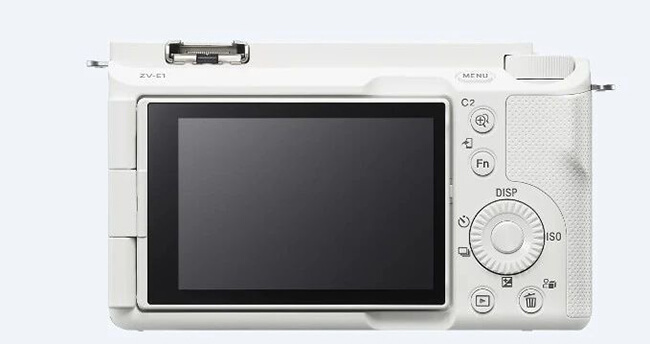
The Sony ZV-E1 is a full-frame E-mount mirrorless camera aimed at vloggers and ambitious content creators.
It has nearly everything a vlogger needs: Sony’s class-leading autofocus, a front tally light, a stabilized sensor, crop-free 4K/60, and excellent rolling shutter performance. It also features tools that simplify solo shooting, such as Auto Framing mode (which dynamically zooms in on subjects like a human cinematographer) and Product Showcase mode (which overrides face detection when you’re clearly showing something to the camera).
The ZV-E1 has two command dials, both on the back, making manual video control a bit cumbersome—though a touchscreen LED interface encourages a more automated presenter/operator workflow.
Its subject recognition system is highly reliable. The lack of a fan means it’s more prone to overheating than the similar FX3. It adds auto modes that crop and track recognized subjects across the frame, adding dynamism to single-operator shots.
“The ZV-E1 has clever automation modes but can be tedious to operate. Still, its power at this price is hard to match.”
The camera’s 4K footage (up to 120p) is detailed with minimal rolling shutter, but handheld shots require the strongest image stabilization (with crop), as lower-intensity modes leave footage slightly shaky. The built-in microphone is good, and the camera has headphone and microphone jacks.
The ZV-E1 tries to blend the FX3 cinema camera’s capabilities with automated ease of use, but manual control can feel clunky, and auto modes may overwhelm beginners. Even so, its value at this price point is unmatched.
A stronger competitor?
If your budget is tighter than the ZV-E1’s, the Panasonic S9 is a solid alternative, costing about $1,000 less. It also has a stabilized full-frame sensor but lacks a headphone jack and some vlog-specific features of the Sony. While its sensor can shoot above 4K for more post-production flexibility, its slower readout causes cropping in 4K/60 and noticeable rolling shutter, which is a drawback.
Source: dpreview, author: Mitchell Clark.
Related Tags: Buy a camera
